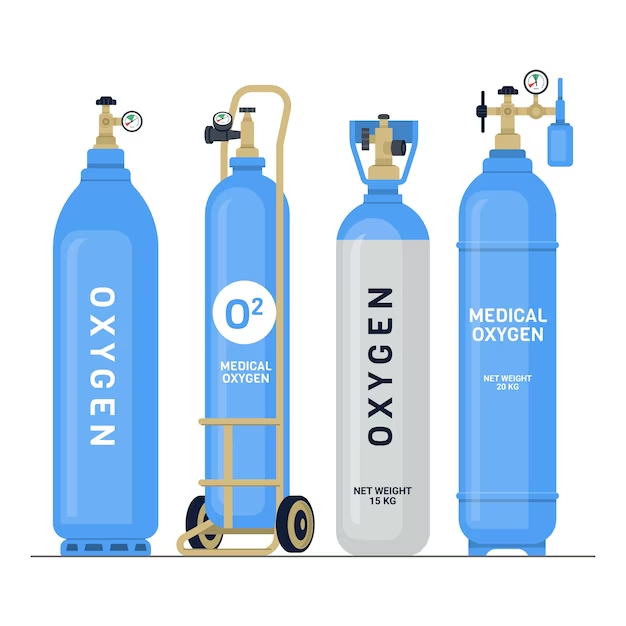
Carbon dioxide (CO2) cylinders are crucial in various industries and applications, ranging from beverage carbonation to fire suppression systems. Understanding their uses, adhering to safety measures, and properly maintaining these cylinders are essential to ensure safe and efficient operations.
Uses Of CO2 Cylinders
CO2 cylinders find applications in diverse fields due to their unique properties. Some common uses include:
- Beverage Industry: CO2 cylinders are widely used in the beverage industry for carbonated soft drinks, beer, and sparkling water. The pressurised CO2 gas dissolves in the liquid, creating the desired fizziness.
- Medical Applications: In the medical field, CO2 cylinders are used for insufflation during laparoscopic and endoscopy procedures. The gas creates a clear field of view for surgeons and minimises the risk of injury.
- Welding And Metal Fabrication: CO2 cylinders are popular for welding and metal fabrication processes. CO2 gas is a shielding gas to protect the molten metal from reacting with oxygen in the atmosphere, producing high-quality welds.
- Fire Suppression Systems: CO2 is utilised in fire suppression systems where water-based suppression is impractical. The gas displaces oxygen, effectively extinguishing fires in enclosed spaces such as server rooms and archives.
- Aquariums And Plant Growth: In aquariums, CO2 cylinders can supply plants with carbon dioxide, promoting healthy growth. This process, known as carbon fertilisation, benefits aquatic ecosystems.
Safety Measures
Working with CO2 cylinders requires strict adherence to safety protocols to prevent accidents and injuries:
- Proper Ventilation: When using CO2 indoors, ensure adequate ventilation to avoid gas accumulation. Accumulated CO2 can displace oxygen, leading to asphyxiation.
- Avoid Direct Inhalation: Inhaling CO2 gas can be dangerous, leading to dizziness, headache, and even unconsciousness. Always work in well-ventilated areas and use personal protective equipment.
- Store Upright And Secure: Store CO2 cylinders upright, secured with proper restraints to prevent them from falling or tipping over. This minimises the risk of valve damage or gas leaks.
- Check For Leaks: Before using a CO2 cylinder, inspect it for any signs of damage, corrosion, or leaks. A mixture of soap and water can be applied to connections and valves to detect leaks by observing the formation of bubbles.
- Avoid Excessive Heat: CO2 cylinders should be kept from heat sources and direct sunlight. Elevated temperatures can increase the pressure inside the cylinder, leading to potential ruptures.
Maintenance Guide
Regular maintenance ensures the longevity and safe use of CO2 cylinders:
- Visual Inspections: Perform routine visual inspections to identify any signs of corrosion, dents, or other damage. Address any issues promptly to prevent deterioration.
- Pressure Testing: Periodically test the pressure relief valve and the overall pressure of the cylinder. Pressure testing helps ensure that the cylinder operates within safe parameters.
- Valve Maintenance: Inspect the cylinder valves for proper functioning. Lubricate valve threads as recommended by the manufacturer to prevent them from seizing.
- Hydrostatic Testing: Follow the manufacturer’s guidelines for hydrostatic testing, which involves subjecting the cylinder to high pressure to ensure its structural integrity.
- Transportation Safety: When transporting CO2 cylinders, secure them upright to prevent rolling or tipping. Use appropriate restraints during transportation.
Conclusion
CO2 cylinders are vital in various industries, from beverage carbonation to medical procedures and fire suppression. Ensuring safety through proper ventilation, leak checks, and secure storage is paramount. Regular maintenance, including visual inspections and pressure testing, guarantees the cylinders’ reliability and extends their lifespan. By following these guidelines, individuals and industries can harness the benefits of CO2 cylinders while minimising risks.
Featured Image Source: https://img.freepik.com/free-vector/flat-design-gas-cylinder-illustration-set_23-2150268502.jpg?size=626&ext=jpg&ga=GA1.2.1148201433.1684066497&semt=ais